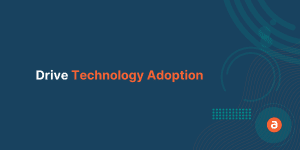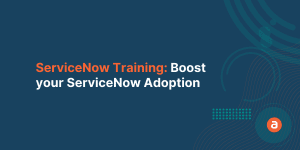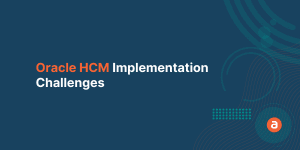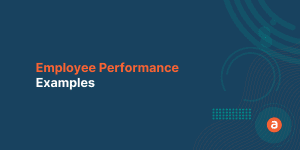Many Organizations recognize the significance of training employees & want to dive right in. Your employees should have the necessary skills to perform their tasks efficiently. To have these skills, training is imperative.
Investing in employee training is a wise decision but knowing the finer details like which employee needs training, what type of training is required, when to start the training, etc. are also equally important so far as creating impactful training is concerned. This is where the Training Needs Analysis (TNA) comes into play.
As a Learning and Development (L&D) professional, it could be challenging for you to choose the right employee training methods & get the best out of it. Training programs sometimes go in vain due to improper or poor assessments of needs.
If you are a Learning and Development (L&D) professional and looking for:
- What is Employee Training Needs Analysis & why it is important?
- What are the different types of Training Needs Analysis?
- How to create an effective Training Needs Analysis program?
Then this blog will provide you with the necessary insights. This article covers the key types of Training Needs Analysis, benefits of TNA, and effective tips to conduct your TNA.
What is Employee Training Needs Analysis?
Employee Training Needs Analysis or training assessment is the process of identifying the training & development needs of your employees to do their job effectively. TNA is the complete assessment of employee skill, competency & knowledge levels required to perform their tasks.
Why Training Needs Analysis is important?
Training Needs Analysis (TNA) helps you to figure out the employee training needs to accomplish your company goals & objectives. TNA clearly shows where your employees stand right now and what else they require to meet your organization’s goals.
What is the purpose of a training needs analysis?
Training needs analysis is an essential part of any training and development program. TNA should be conducted regularly, as employee needs can change over time. The purpose of a TNA is to improve overall employee performance by providing targeted training and development opportunities.
Additionally, TNA can be used to assess the effectiveness of existing training programs and identify potential areas for improvement. When run consistently across a business, a TNA will help organizations prioritize their training plan for the entire group, delivering a program with the greatest return on investment.
When should training needs analysis be done/followed?
Organizations are constantly identifying and refining business goals. They might want to reduce turnover, increase employee engagement, and reduce waste in a factory setting. Often, the first reaction is to create a training program to close identified gaps, solve problems, and meet business goals.
The issue with this approach is that training is not always the answer. A popular saying 30 years ago was that if you could put a gun to someone’s head and they can do the job, it’s not a training problem. It’s an organizational problem. But how do you know?
According to Jennifer Hofmann, Founder of InSync Training,
“A Training Needs Analysis identifies the business problem and then determines where a training intervention can help close a gap and meet goals. It will include surveys, focus groups, and interviews to identify needs and will result in a list of recommendations about how gaps can be closed.”
A Training Needs Analysis helps to clarify the business problem, identify gaps in process, skills, and knowledge, and articulates where and how a training intervention can help close the gap. It enables you to be proactive rather than waiting for something to go wrong before recognizing an issue.
Often, the recommendations will include training and other interventions, such as improvements in the process or even a change in management.
TNA should be done when
- Employees don’t perform at the expected level.
- Employees show leverage in their work.
- Productivity and output level decreases.
- Employees take more time to do work than before.
What are the different types of Employee Training Needs Analysis?
Many needs TNA assessments or methods are available. The following are the most common & successful methods.
Methods of Employee Training Needs Analysis
a. Organizational Analysis
Organizational Training Needs Analysis focuses on the efficacy of the enterprise as a whole. It aims to identify the areas within the company where your training emphasis must be placed.
In this method before selecting a suitable training technique, factors like company goals, environmental policies, economy & changing demographics are taken into consideration. It helps to determine whether your training methods can fill the gaps when implemented or not.
b. Individual Assessment
An individual assessment or individual analysis focuses on particular employees to discover their performance level. Individual assessment will show “who needs training & in which area”. It helps to identify the strengths, weaknesses, & areas of interest of your employees.
Individual Development Plans is when your employee identifies their own goals & align it to the business needs. It is a kind of employee self-development plan which when coupled with certain inputs from the manager will help them to meet overall organizational needs. Organizations perform individual analysis or assessment through questionnaires, one-to-one sessions, feedbacks, surveys, etc.
c. Task-related Analysis
Task assessments or Operational analysis compile data about a particular job function. It is the process of identifying knowledge levels, competencies & skills that are required to do the job effectively.
This method focuses on the “what kind of employee training is needed”. Determining employee critical behavior & studying their job descriptions & then assigning the task to be done. This step involves a detailed study of job descriptions & employee skill analyses to pinpoint the training needs.
How to create an effective Training Needs Analysis program?
Training is the most significant investment a company can make to improve employee satisfaction & performance. Simply organizing training activities will not suffice. It is important to look at whether your training is successful or not, based on the goals & objectives set during the training design phase.
What if your training isn’t showing the expected Return on Investment? Before such things happen, let us discuss how to conduct effective learning & development Training Needs Analysis:
1. Set your Company goals

Setting your goals must be the first step in your Training Needs Analysis. Determine company goals & develop a plan to achieve it. Understand where you stand right now, decide what you are trying to achieve & then determine your long-term goals.
Once you have clearly defined goals, you must communicate it effectively with your workforce. (Note: Expected or desired outcomes of your training must be determined at this phase.)
2. Identify the KSA needed to meet your goals

Your goals can be concrete or intangible, but if you can set it right & train your employees, then it is easily achievable. This step primarily focuses on breaking down what your employees will know & what they can perform at the end of the training.
Understand the landscape of learning & development and focus on employee KSA (Knowledge, Skill & Ability) to meet your organization training goals.
3. Evaluate current training methods

Many organizations have some materials & methods in place. Look for areas of improvement in the current training methods and also try to bring in innovations to keep your employees engaged & productive. You must identify what is working, what is ineffective & what can be altered.
The COVID-19 pandemic has made us think of different methods of remote training options as the employees are working remotely. This is the right time to switch to more practical and contemporary training methods rather than sticking to the traditional classroom one.
4. Leverage innovative training methods

Many companies have moved to technology-based learning & Online training. Take time & talk to your employees to understand their challenges in learning. According to Gallup’s report, 85% of employees are disengaged at work. This is primarily due to improper training methods. You can create interesting content or look for effective training tools that keep them engaged.
A Digital Adoption Platform is the latest digital transformation trend that provides hands-on learning (in-app training) with the help of interactive software walkthroughs. (more on this later)
5. Match training to your needs

This step is to make sure that you are providing what your employees need to meet your organizational goals, from the get-go. Give your employees the training they need not the extras that might distract or disengage them. You must revamp your training programs as & when required, based on employee feedback.
Work from home forces Learning & Development Professionals to look for training methods that can make remote employee learning easier & effective. A Digital Adoption Platform (DAP) is one such investment.
Apty is the world’s fastest-growing On-screen guidance platform that helps enterprises in providing effective employee training. Apty DAP helps you to improve employee engagement, increase software ROI & lower training costs.
To handle the current pandemic situation & to overcome the remote (work from home) training challenges, invest in robust platform like Apty. Apty’s interactive software walkthroughs engage your remote employees & allow them to complete tasks effectively.













